Seconded By: Lars Boering,
For more than a century, South Africa’s demand for gold, diamonds, coal, and platinum has gone from strength to strength, often shifting in accordance with the political economy and the availability of foreign markets. Mineral exploitation by means of cheap and disposable labor has brought about national economic growth, making the mining industry the largest industrial sector in South Africa. Recognized globally for its abundance and variety of mineral resources, which account for a significant proportion of world production and reserves.
‘The mine’, irrespective of the particular minerals extracted, is central to understanding societal change across the country and comparable to mining concerns around the world. This enabled me to channel my conception of ‘the mine’ into visual representations that gave agency to these forgotten communities. The countless stories of personal suffering are brought to the surface and the legacy of ‘the mine’ is revealed.
This is apparent through land rendered unfit for alternative land uses such as ecotourism and agriculture, through public health crises within local communities unequipped to cope with the burden of air, land, and water pollution, and through the disruptive influence of historical labor exploitation impacting on family structures and cultural positioning.
This series of images are part of a larger body of work titled ‘Legacy of the Mine’ which sets out to build a visual narrative that provides agency to those whose lives and livelihoods have been destroyed by mining processes in South Africa and the long-term environmental ramifications, to expose the far-reaching neglect by the successive governments and corporate bodies that have driven the mining industry, to explore how people have coped within their circumstances, and to sensitize a public saturated with the idea of ‘climate change’ by focusing on the local problems that we can see. The objective was thus to travel the length and breadth of the land to reveal through the lens the forgotten communities that the mining industry has left behind.
This project resonates universally showcasing issues that we are all familiar with, irrespective of where we live: issues of greed, inequality, overconsumption, and environmental degradation. Once a symbol of wealth and a formidable force in the development of South Africa, the mine today reveals the scars of neglect and decay and as such poses an irreversible threat to our society.
Ultimately, I hope that this body of work ignites discussion about how we need to stand together in bringing about a broader understanding of our shared resources. We need to acknowledge that the environment is as fragile as the people who live on the land. Growth and development are prerequisites for economic stability, yet we must move forward into a balanced and sustainable future.
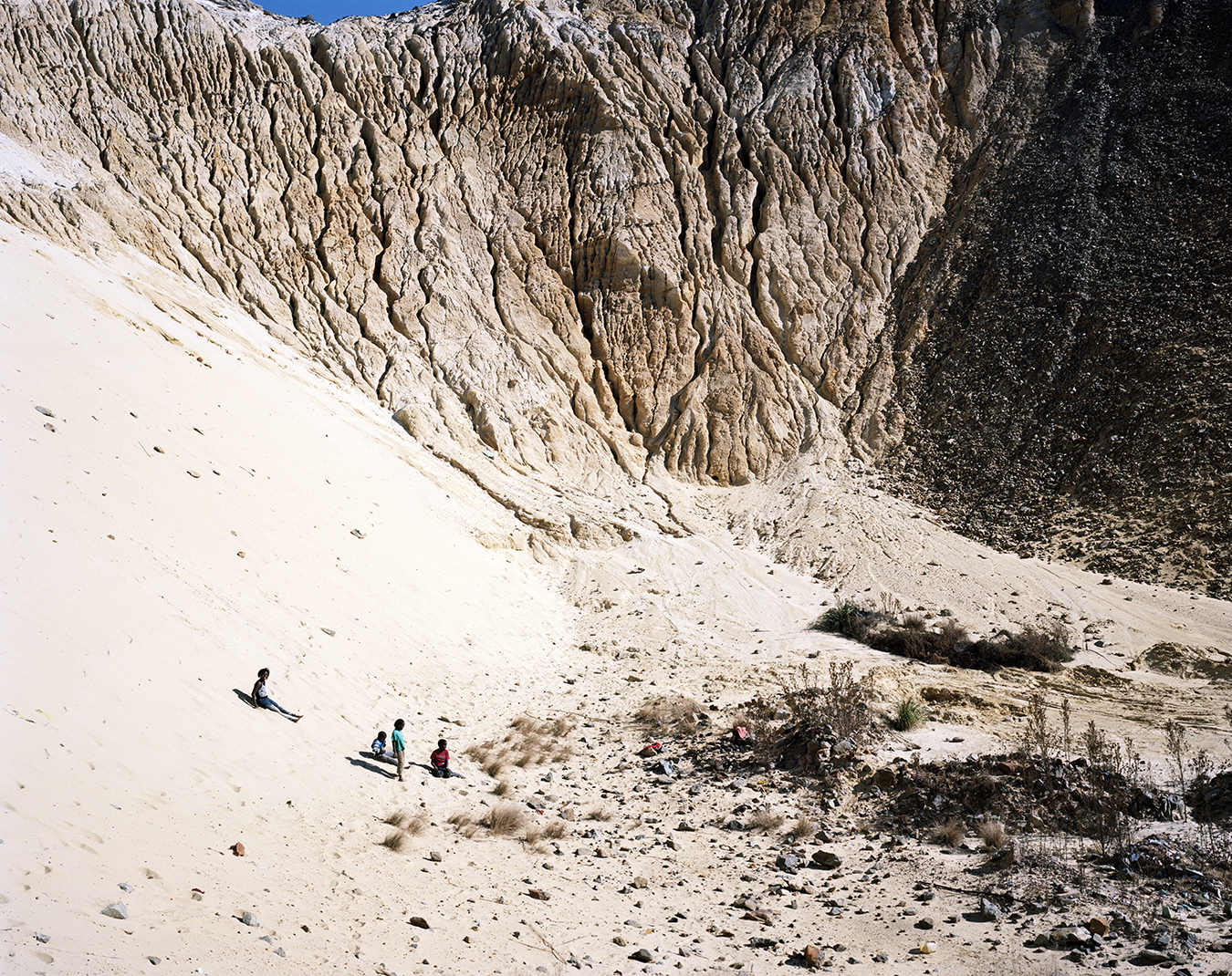
Riverlea mine dump, Main Reef Road, Johannesburg, Gauteng
Monde, Puleng, Zizipho, and Khuselo play on the Riverlea mine dump near their homes. Riverlea is a new low-cost housing development on the periphery of the dump, where the gold of the Witwatersrand Main Reef was first discovered in 1886. For decades, gold miners have been extracting residual gold from the dumps. Today chemical methods are used to enable companies to ‘remine’ the dumps, slowly changing the Johannesburg landscape once again.

Acid mine drainage, Blesbokspruit, Emalahleni (Witbank), Mpumalanga
Large coal deposits have given rise to widespread mining operations in the area. This has resulted in water systems being contaminated by acid mine drainage, which contains large quantities of metals.
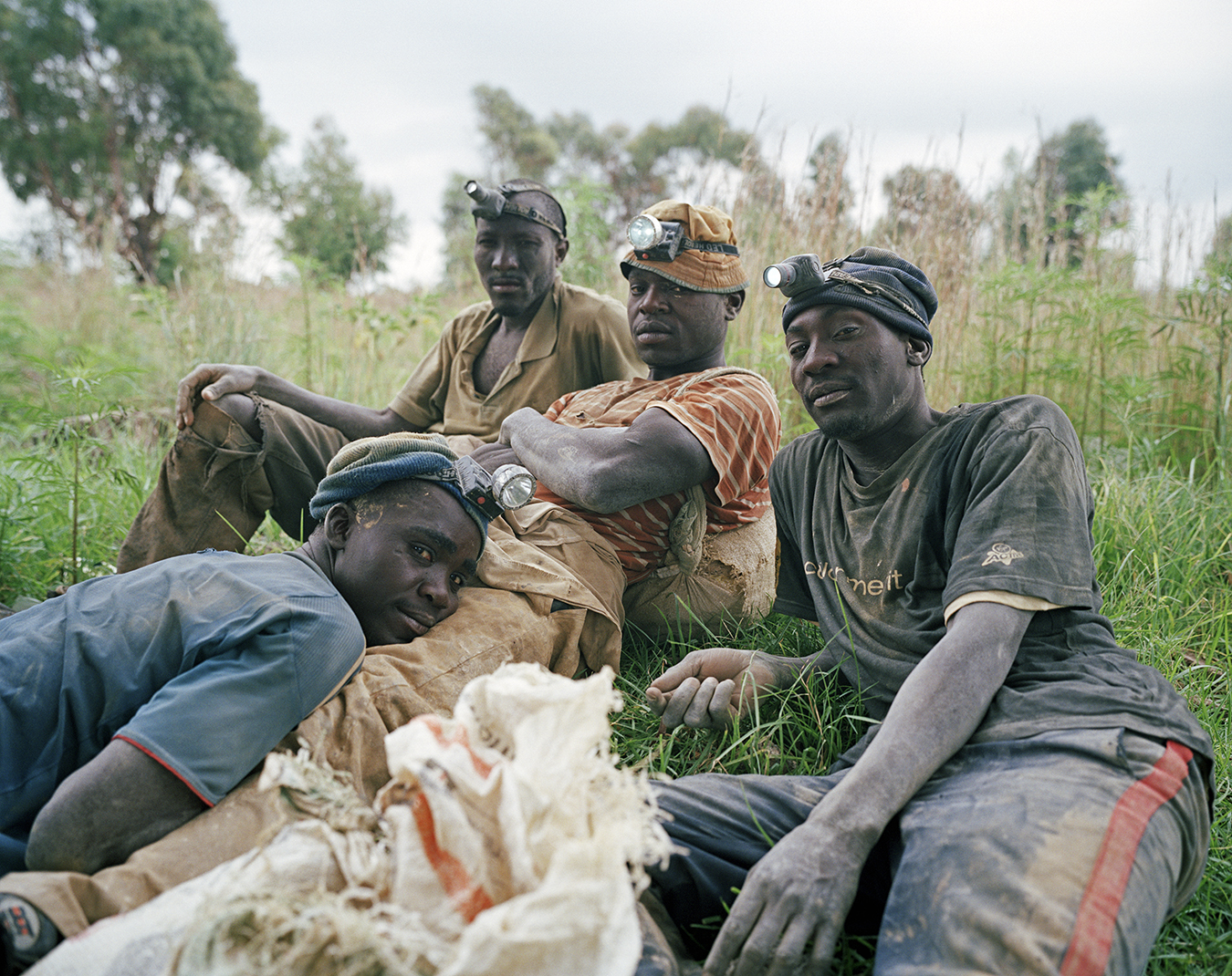
Linda, Daniel, Dumisani and Calvin, informal gold diggers, Roodepoort, Johannesburg, Gauteng
Linda Ndlovu, Daniel Mandlo, Dumisani Mahlangu, and Calvin Sibanda rest after a full night of work in a disused underground gold mine shaft. The men are highly skilled informal diggers with many years of experience. They are seen as ‘brave men’ and ‘heroes’ by the local community and are respected for their ability to pinpoint the gold-bearing deposits.
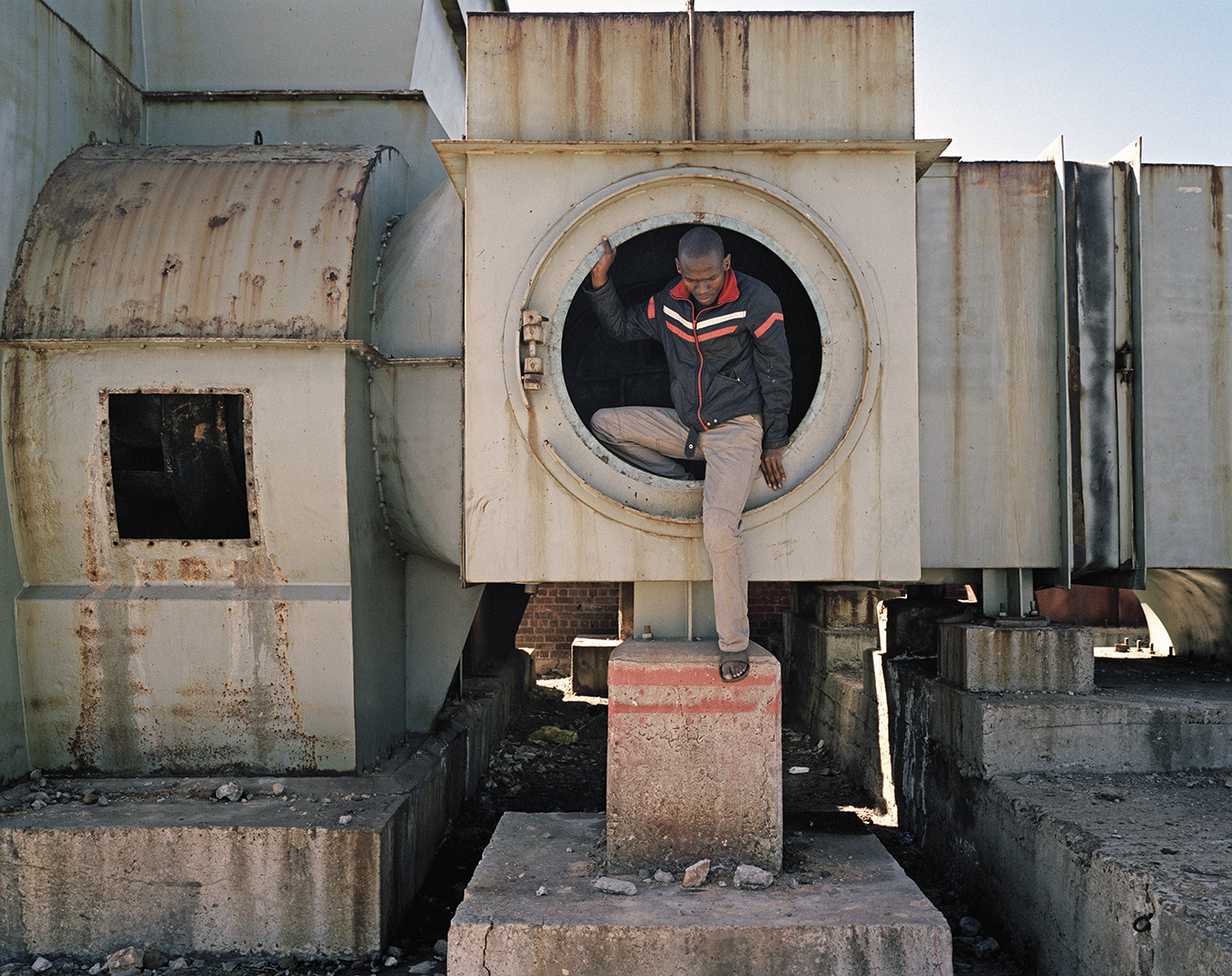
Sandile Dlamini, informal gold digger, Payneville, Springs, Gauteng
Sandile Dlamini, 24, lives in the Payneville squatter camp in Springs. He used to work as a miner at Grootvlei Mine before it closed in 2010. Sandile showed me an un-operational ventilation shaft, ‘No. 8’, which is used by illegal miners as an access to Grootvlei Mine. From here shaft ‘No. 4’ is accessible, the main shaft where one can find gold of a higher value. Sandile says, ‘Men have fallen to their death trying to climb into this shaft.’
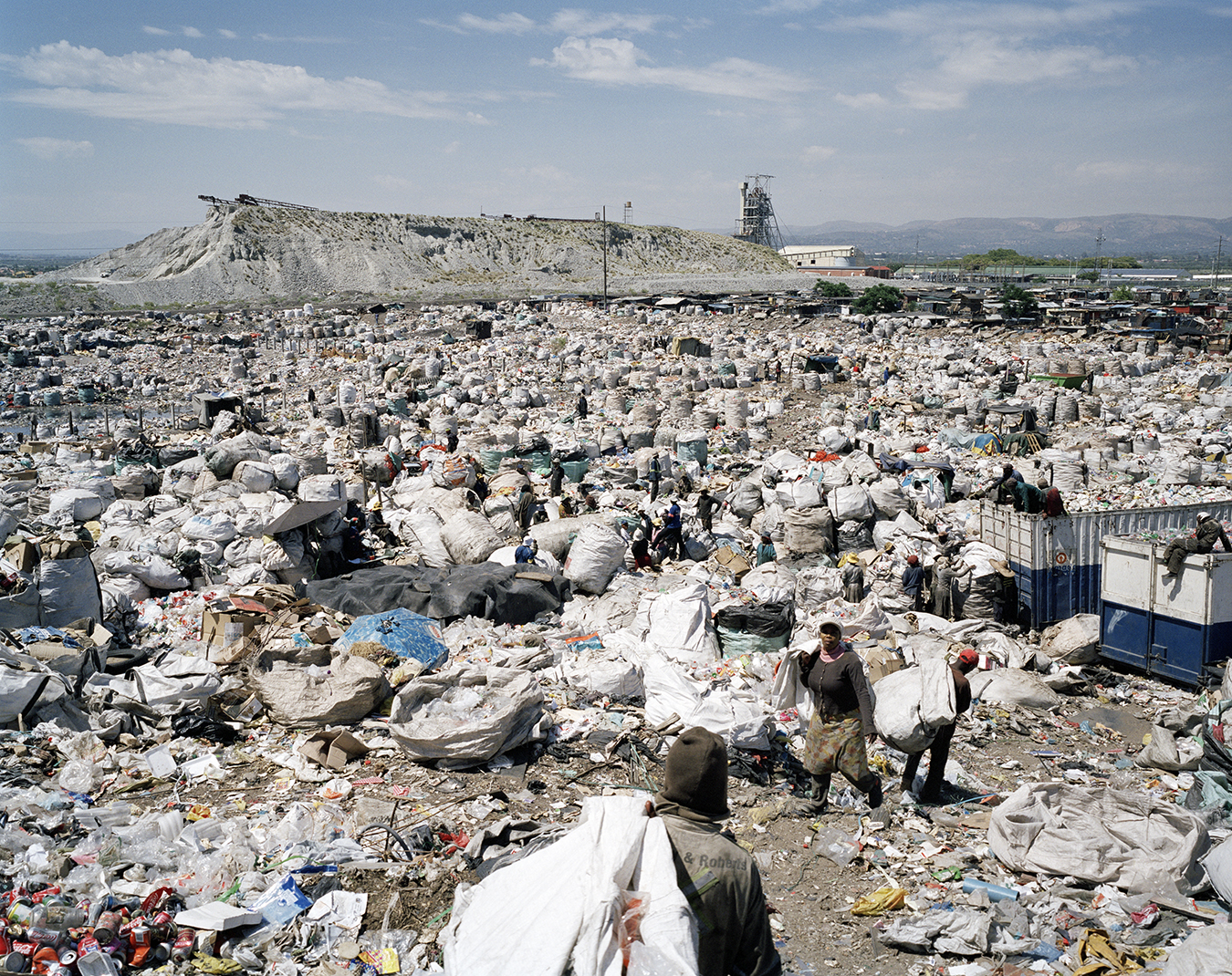
Sondela municipal dumping site, Rustenburg, North West
On 15 January 2013, it was announced that Anglo American Platinum (Amplats) had made plans to restructure its operations in the face of rising production costs and poor platinum prices. This would result in the retrenchment of 14,000 employees, 13,000 of whom are located in the Rustenburg platinum belt. Among the shafts affected are Amplats Khuselek Platinum Mines Khuseleka No. 1 shaft.
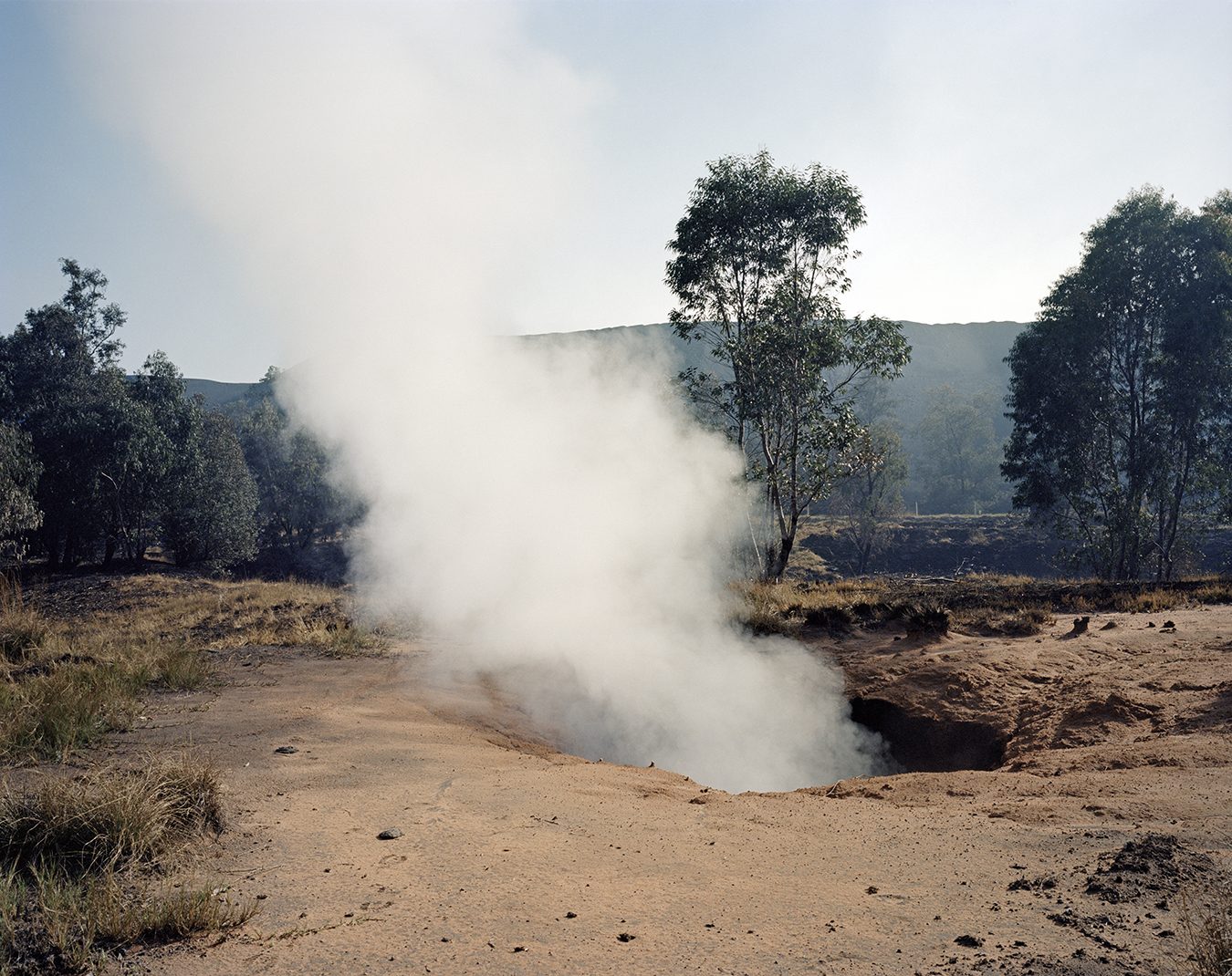
Burning underground coal fires, Emalahleni (Witbank), Mpumalanga
The decommissioned Transvaal and Delagoa Bay Coal Mine is known to be one of the most dangerous abandoned mines in South Africa. Mining at the state-owned colliery started around 1896. Following closure in 1953, the area became unsafe because of the underground burning of the remaining support pillars. Even before mining had stopped, underground fires occurred and the surface began to collapse.
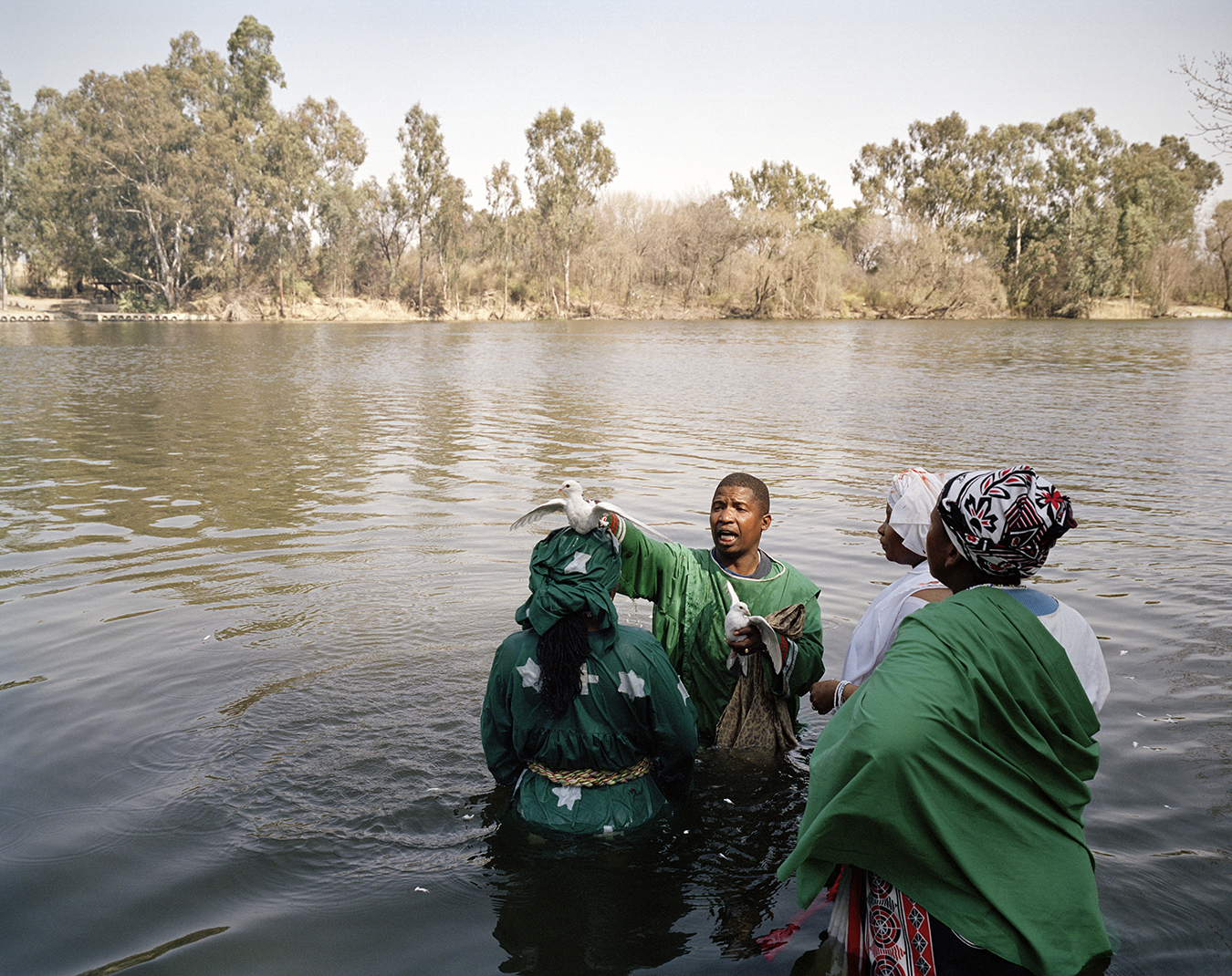
Ritual offering, Vaal River, Maccauvlei area, Free State
Jeremiah Stoaba and his wife Maria from the Apostolic Church of Zion perform an animal sacrifice on the banks of the Vaal River in the Maccauvlei area, on the periphery of the New Vaal Colliery. Two to three times a year they speak to the ancestral ‘river gods’ here. The banks of the Vaal River are rich in minerals, including coal, copper, gold, uranium and other associated minerals, yet is relatively unscarred by mining.
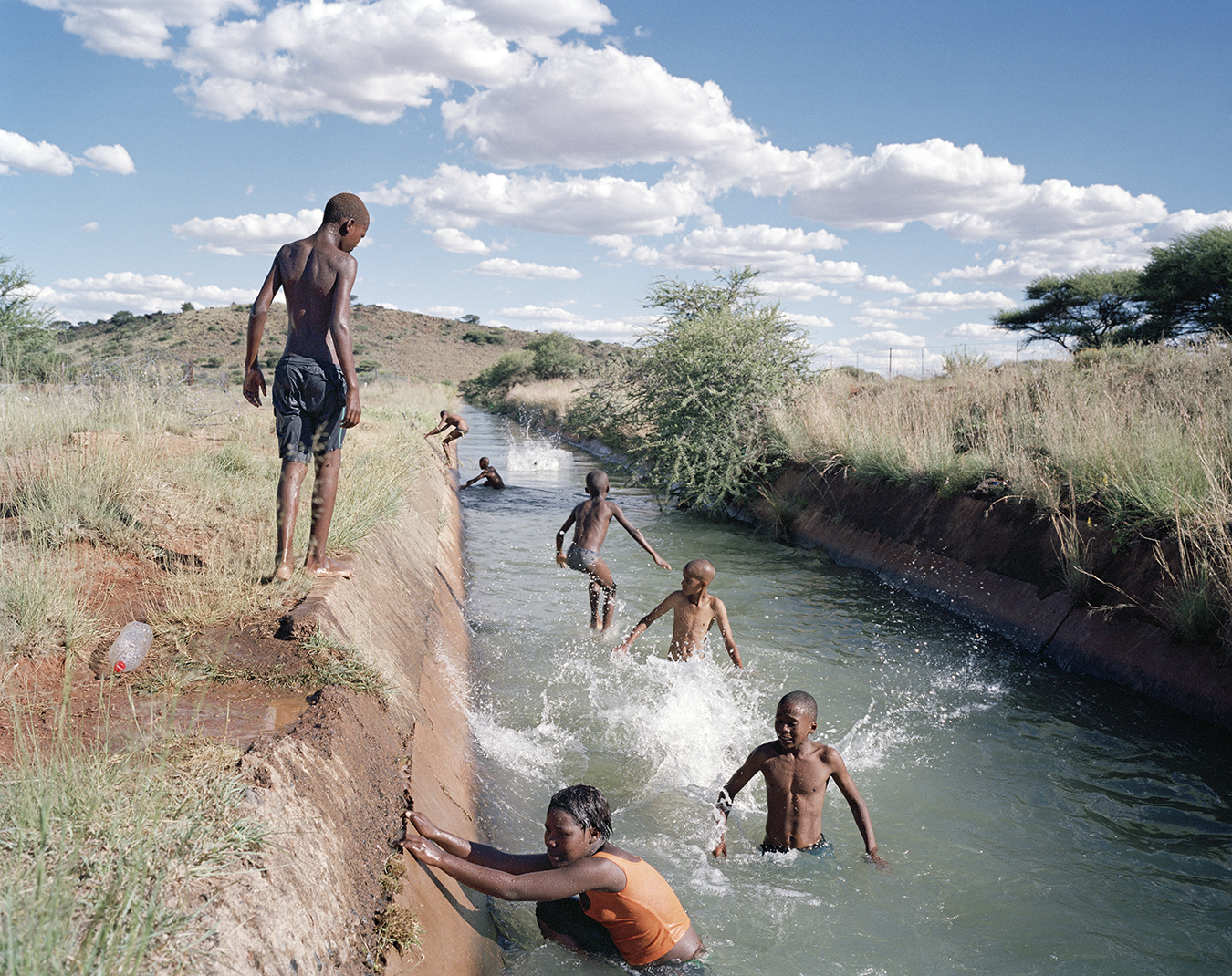
Swimming in the ‘Long Sea’, Diamanthoogte, Koffiefontein, Free State
The suburb of Diamanthoogte (‘Diamond Heights’) is home to a predominantly colored community that lives on the outskirts of the diamond-mining town of Koffiefontein in the Free State province. During the summer months, children enjoy swimming in the canals, which they refer to as the ‘Long Sea’. The canals carry the overflow of water through the town from the Kalkfontein Dam and the mine dam to outlying farms.

Mahlomola William Melato, silicosis victim, Oppenheimer Park, Tabong, Welkom, Free State
Mahlomola William Melato rests during the heat of the day at his home in Oppenheimer Park. Since being diagnosed with silicosis, Mahlomola’s weight dropped from 80 kg to 49 kg. He suffered from shortness of breath, a debilitating cough, general body weakness and discoloration of the skin. Mahlomola died on 22 May 2013, and was buried on 1 June.
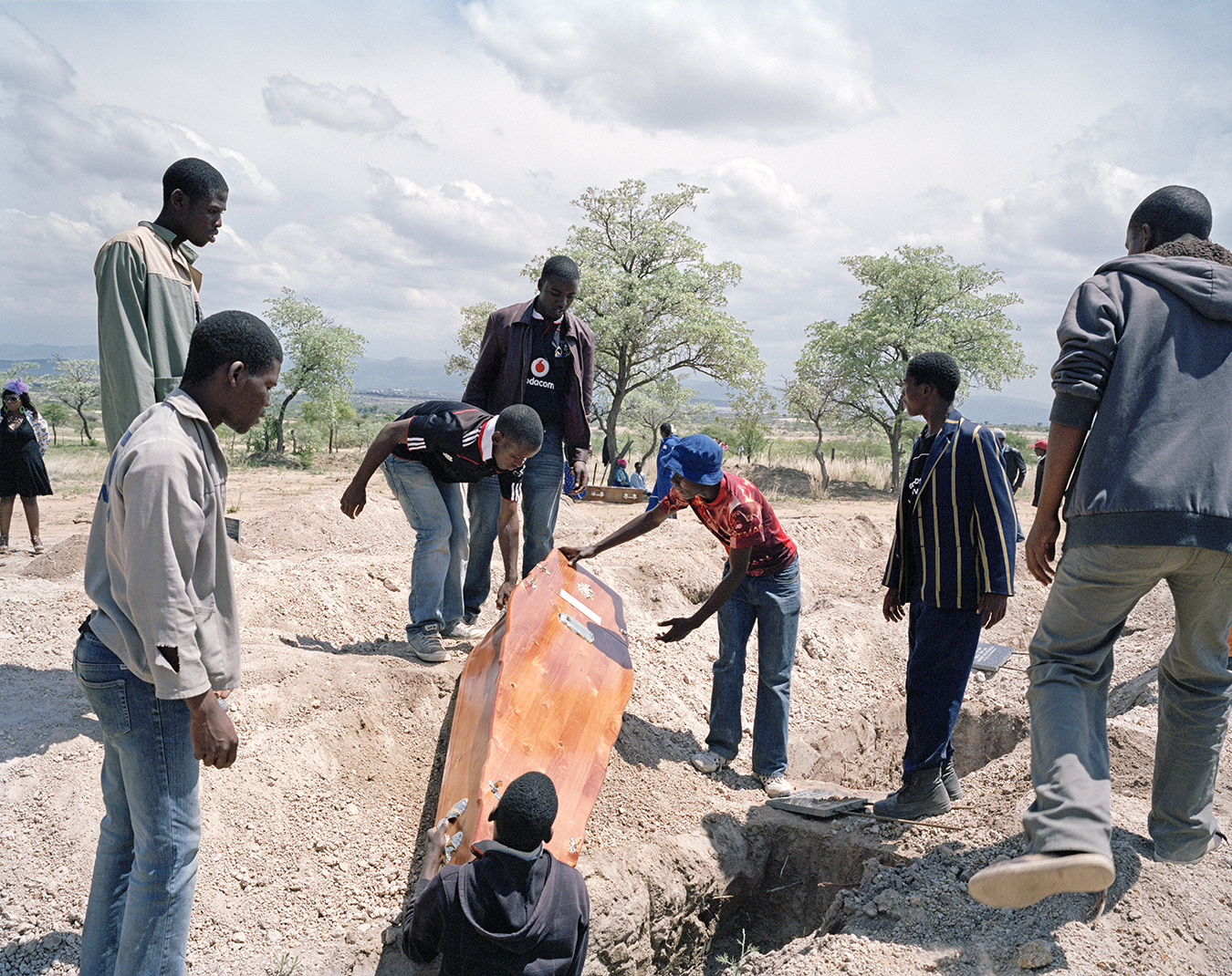
Reburial service, Sekuruwe Village, Limpopo
The exhumation by Anglo Platinum’s Mogalakwena Section Mine of 149 graves from a section of the Blinkwater farm was not without controversy. A mechanical digger was used in the process. Some bones were broken as a result and the skeletons were not all kept separate. Community members became suspicious when they were restricted from witnessing the exhumation. After a long, emotional battle, on 27 November 2012 the remains of 149 people were reinterred.

